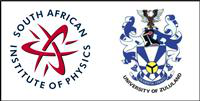Speaker
Abstract content <br> (Max 300 words)
Distributed fiber optic sensors (DFOSs), like all other fiber optic sensors (FOSs), have advantages of electromagnetic interference immunity, excellent measurement resolution and water and corrosion resistance. Strain, pressure and temperature are some of the physical parameters measured and monitored by DFOSs. One of the techniques employed by DFOSs is the Optical Time Domain Reflectometry (OTDR). In this technique, a short pulse of light, in the order of nanoseconds, is coupled into an optical fiber. Measurement of the backscattered power as a function of time/position on the fiber gives information about the local loss distribution. However, the power of the backscattered signal is very weak; its amplitude is comparable to that of the noise, affecting the measurement accuracy. This noise consists of the detection and system noise components. Detection noise comes from the photodetector and is easily quantified. The major contributor to the system noise is interferometric noise. Interferometric noise results from the interference of backscattering waves and is a function of the laser coherence length; the longer the coherence length the bigger the interferometric noise and vice versa. In this work, we propose a mathematical model for the interferometric noise of DFOS systems based on the OTDR technique. Using this model, we simulate a 10km Raman DFOS system. Input pulse durations of 20ns and 40ns and considering coherence lengths of 4m and 8m respectively are simulated. We report that the noise level due to an 8m coherence length source is about four times greater than that due to 4m coherence length. Our model agrees with established literature and can therefore be applied in Raman (DFOS) system to ascertain the level of system noise. Studies have demonstrated that the use of coding techniques in Raman DOFS systems based on the OTDR technique improves the signal to noise ratio (SNR). Our model includes two correlation coding based techniques, noisy pulse and bit stream, to enhance the system’s SNR, and achieve temperature and spatial resolutions of 2℃ and 2m respectively, suitable for application of temperature monitoring in power lines, conveyer belts, oil and gas pipelines.
Would you like to <br> submit a short paper <br> for the Conference <br> Proceedings (Yes / No)?
yes
Apply to be<br> considered for a student <br> award (Yes / No)?
yes
Main supervisor (name and email)<br>and his / her institution
Dr R. Martinez.
rodolfom@uj.ac.za
University of Johannesburg
Level for award<br> (Hons, MSc, <br> PhD)?
Msc

